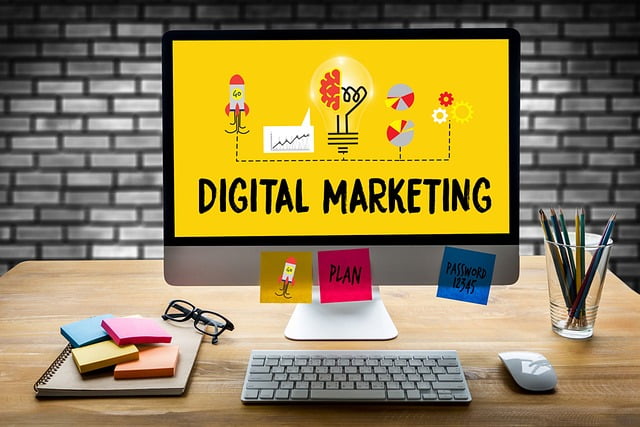Offline Advertising Media – In the midst of various innovations in digital and online media, offline advertising media still has an important role in the world of advertising. Offline media includes various channels such as print, radio, television, outdoor and many more.
Even though the internet has changed the advertising landscape, offline media remains relevant for reaching various audiences and achieving different marketing goals.
In this article, we will explore offline advertising media, exploring different channels, effective strategies, and how these media can co-exist with digital media in advertising campaigns.
Types of Offline Advertising Media
1. Print Ads:
• Newspapers: Print advertising in newspapers is still widely used to reach local and regional audiences. This includes display type ads, then classified ads, and advertorials.
• Magazines: Advertisements in magazines are usually more specialized and focused on certain target segments. Specialty magazines, such as fashion or hobby magazines, are often the choice for very specific ads.
• Brochures and Pamphlets: Brochures and pamphlets are good channels for local advertising and special promotions. They are often used at fairs or community events.
2. Radio Advertising:
• Commercial Radio Advertisements: Radio advertisements are audio advertisements broadcast on radio channels. They can be very effective for creating brand awareness using sound and music.
• Program Sponsorship: A company can sponsor certain radio programs to increase their exposure. It is often used in news programs, sporting events, or certain events.
3. Television Advertising:
• Commercial Television Advertising: Television advertising is the most expensive form of advertising, but it is also the most effective in reaching large audiences. This includes visual and audio advertisements shown during TV programs.
• Infomercials: Infomercials are television advertisements that are usually longer in duration and focus on providing in-depth information about a product or service.
4. Outdoor Advertising:
• Billboards: Billboards seen on streets, bridges, or tall buildings can create a strong impression because they are constantly exposed to many people.
• Transit Advertising: Advertising on public transportation such as buses, trains, and taxis is a form of outdoor advertising that can reach a moving audience.
5. Digital Billboard Advertising:
Although considered outdoor advertising, digital billboards use digital technology to display shifting and attention-grabbing ads in a more dynamic way.
Benefits of Offline Advertising Media
1. Create Strong Brand Awareness:
Offline media, especially television and billboard advertisements, have the potential to create a strong impression in the minds of consumers. Strong visuals and audio can help build a strong brand image.
2. Accessing a Wide Audience
Offline advertising is still an effective channel to reach a large and diverse audience. Television, radio and newspapers have a wide audience base.
3. Trust and Reputation
Print advertisements in newspapers or magazines are often considered more credible by consumers than online advertisements. This can help in building brand trust and reputation.
4. Effective for Local Audiences
For businesses looking to reach local audiences, offline advertising media such as local radio and billboards in certain areas can be a good choice.
Challenges in Offline Advertising Media
1. High Costs
One of the biggest challenges in offline advertising media is cost. Advertising on television, radio, and billboard ads can be very expensive, especially when you add in the cost of producing the ad.
2. Lack of Precision Targeting
Offline media often cannot provide the level of precision in targeting audiences that digital media can. This can result in wasted advertising budget if the message does not reach the right people.
3. Limitations of Performance Measurement: Measuring offline advertising performance can be more difficult than digital media. It’s difficult to track how offline advertising impacts consumer actions directly.
Part 4: Strategies for Success in Offline Advertising Media
1. Plan Carefully: Planning is the key to success in offline advertising media. Determine your goals, audience and the message you want to convey clearly.
2. Strong Creativity
Attention-grabbing offline ads usually require strong creative elements. The visual design and message must stand out.
3. Media Combination
Don’t be afraid to combine multiple offline media channels for a stronger ad campaign. For example, a radio ad may be supported by a print ad in a local newspaper.
4. Selection of the Right Media
Choose the media that best suits your campaign objectives. If you want to reach a local audience, consider local radio or billboard ads.
5. Performance Measurement
Although offline ad performance measurement is more difficult, it is still possible to track some metrics such as changes in sales or market share after an advertising campaign.
Comparison of Offline and Online Media
Although offline advertising media still has an important role in advertising, there are key differences with online media:
1. Targeting
Online media allows more precise audience targeting based on online behavior, demographics and interests. Offline media generally lacks precision in this regard.
2. Cost
Online media is often more economical than offline media, especially for small and medium businesses.
3. Performance Measurement
Online media provides the ability to track advertising performance in great detail, including click, conversion and retention rates.
4. Interactive
Online media allows direct interaction between users and advertisements, such as clicking on links or filling out forms. Offline media tends to be more passive.
Conclusion
Offline advertising media remains relevant in an increasingly digital advertising world. Understanding offline media types, benefits, challenges, and effective strategies can help companies harness the potential of this medium. It is also important to recognize that offline and online media can complement each other in a successful advertising campaign.
The success of advertising depends on selecting channels that suit the audience and the goals to be achieved. With a careful approach, offline advertising media can still make a valuable contribution to a company’s marketing efforts.
Also Read : Online Advertising Media: Types and Strategies


